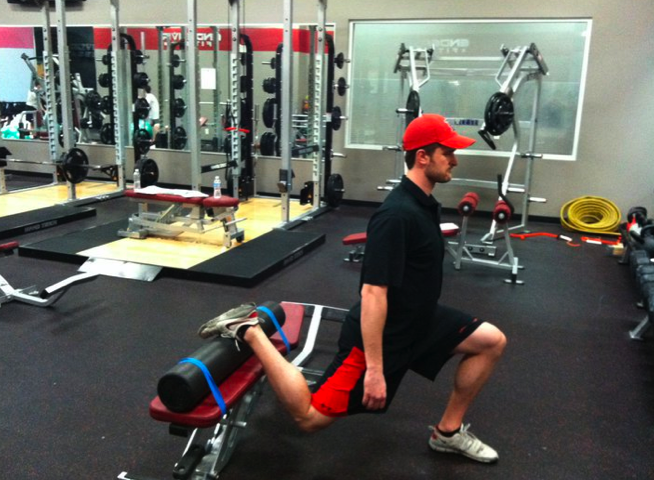A few years back I heard Mike Boyle describe the primary goals of a strength and conditioning program as:
This list is presented in order of importance and represents a philosophy that I’ve completely adopted at Endeavor Sports Performance. While a quality training program will almost completely negate training-related injuries and can drastically reduce sport-related injuries, sometimes injuries still happen. Sometimes players take contact while in an awkward position, which can cause injuries like MCL/ACL tears and shoulder separations. While beefing up the musculature in this area can help optimize joint integrity, the truth is that if enough force is applied at the right angle, an injury will still result. That said, injuries don’t need to shut down your training and development. Monday’s post talked about what hockey players can do to keep making progress despite having an injury. If you missed it, you can check it out here: Training Around an Injury.
Today I want to focus on the first point from Boyle’s list, or more specifically, two recent changes we’ve made at Endeavor to keep in line with this philosophy. Naturally, getting hurt while training is a worst case scenario. This is especially true at higher levels of competition (Major Junior, NCAA D1, Pro) where players have career changing exposure opportunities and/or money at stake. At these levels, it’s extremely important to keep the risk:reward ratio of various training strategies in mind. Is it worth the associated spinal compression and overall physiological stress to get an NHL player’s front squat from 325lbs to 335lbs? Will that make him a better player on the ice? What if he tweaks something in the process? What if something he does during training causes him to miss a week of games (~2 games). If this player makes $2.4 million/year (average NHL salary), two missed games is over $58,500 in lost revenue. While I don’t want to get into the argument about whether professional athlete’s salaries are appropriate, I think it’s important to understand whats at stake for these players.
Severe injuries (herniated discs, ACL tears, separated shoulders, etc.) are worst case scenarios, but they’re also easy to spot. Less obvious, but also undesirable, are minor aches, pains, tweaks, etc. that further tissue stress accumulation in undesirable patterns. If athletes feel something weird while they’re doing an exercise, they’re likely in the wrong place and some accommodation needs to be made. In this regard, we’ve had several players over the last two months tell us that:
If some cases, discomfort is indicative of a lack of ROM at the relevant joint and that needs to be addressed. However, in these cases it’s more likely the discomfort was due to
In other words, the exercise is the problem, not the player. To address this, we made a couple simple changes to make the exercise more comfortable for our players.

The roller is curved, which allows for better contact with the lower leg/foot. By holding it down with minibands, we don’t need another coach/player to hold it, and it allows for some slight forward/backward movement, which accommodates the athletes weight shift during the exercise.
By wrapping the bands around the dumbbells, the stress on the wrist is removed completely, but the resistance to the torso is maintained. One consideration with this variation is that the dumbbells are raised off the ground, so the potential range of motion for the player will increase. This may or may not be desirable, but is important to keep in mind as some coaching cues may change.
The good thing about these adjustments is that they’ve removed discomfort as a limiting factor for progress (and a thought in our players’ minds). Every coach is going to have a different training approach:
But I think ultimately we all need to share a common philosophy in that our goal is always to put our players/athletes in the best position to succeed. This philosophy transcends all aspects of athletic development, from education to program design to exercise modifications to coaching strategies.
To your success,
Kevin Neeld